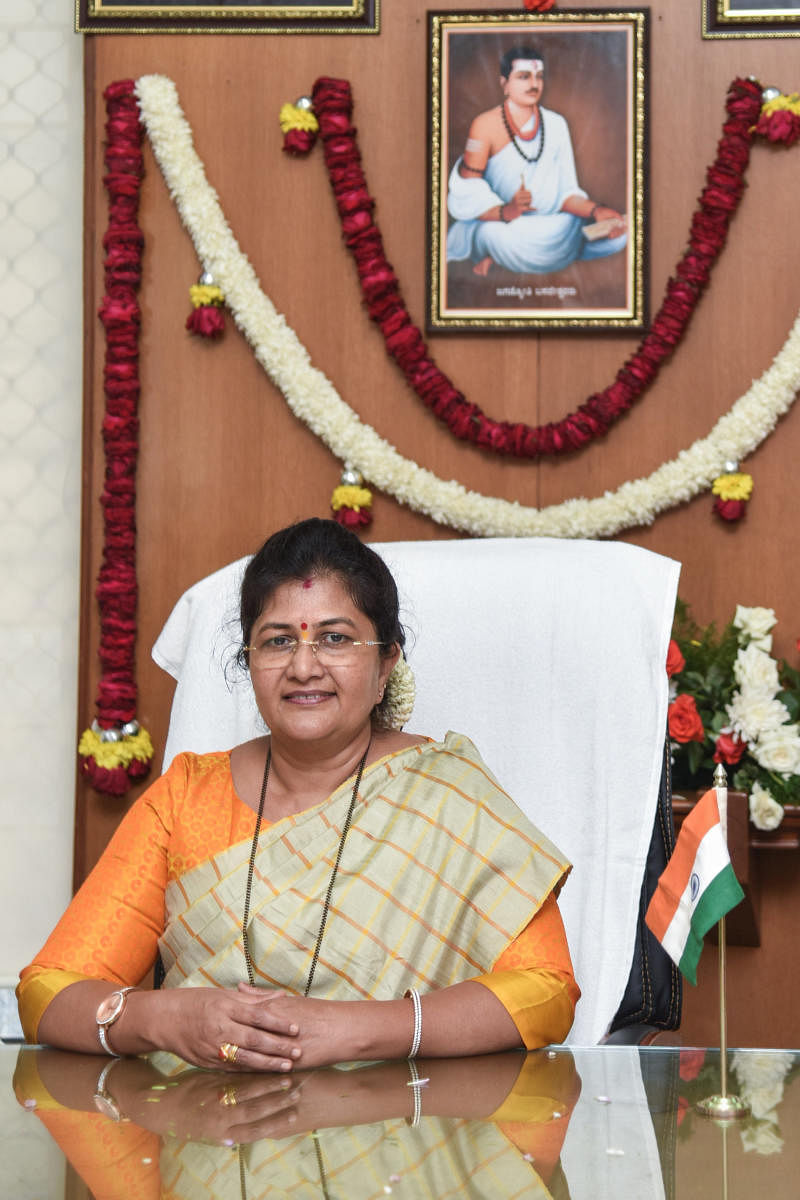
In their recent book, Performing Representation: Women Members in the Indian Parliament, Shirin Rai, and Carole Spary point out that gender as an axis of power is particularly fraught within the context of democratic institutions and practice. Along with the Lok Sabha, state Legislative Assemblies are also an apt site to examine how these issues play out.
When Karnataka’s new Chief Minister B S Yediyurappa announced half of his cabinet a few days ago, all eyes fell on the sole woman member who took the oath. The 49-year-old Shashikala Jolle is a rare Kannada-speaking MLA, and a woman at that, elected from Nipani, a Maratha stronghold. Predictably, she has been given the Women and Child Welfare portfolio. Jolle is a popular leader who had defeated three-time MLA Kakasaheb Patil of the Congress by around 18,000 votes in her maiden big election in 2013 and is known for her work with educational and co-operative institutions. While this may be a moment of elation for the team and constituency of Jolle, the bittersweet irony is the fact that there is just one woman in the new cabinet, at least so far.
A lot of us were lamenting, as we went to parliamentary polls a few months ago, that the representation of women at higher levels of decision-making in India is very low and that the figures of women candidates who contested in this year’s 17th Lok Sabha elections, especially in the state of Karnataka but also in most other states, too, was not at all heartening. Thus, after the number-crunching of the election verdicts, we knew that out of the 724 women candidates who contested in the elections, only 78 have made their way to the Lok Sabha. In the 2014 polls, only 20 women had contested in Karnataka and, of them, the BJP’s Shobha Karandlaje was the only one to win a seat. In last year’s Assembly elections in the state, only 8% of the candidates were women, and of the 200 that contested, only seven got elected to the Assembly.
The results of the 17th Lok Sabha elections recorded many highs – notably the biggest voter turnout figure in a Lok Sabha Election of 67.36%; the second largest ever mandate for an incumbent prime minister; and the highest number of women MPs elected to the Lower House of Parliament since the first general elections in 1952. Before we rush into celebrations, the last point deserves a deeper scrutiny as it is only a small increase from the 63 women MPs who made their way into the 16th Lok Sabha. The 2019 tally of women Lok Sabha MPs amounts to 14.36% of the total strength of the Lower House, but it is still way below the world average of 24.3%. It cannot be ignored that India is still way below Rwanda, where 61.3% of its parliamentarians are women, Bolivia (53.1%), New Zealand (40%), Nepal (32.7%), and even the United Arab Emirates (22.2%) and Bangladesh (20.7%).
Nonetheless, this general election witnessed several notable wins for its women candidates, such as Remya Haridas, one of the 52 Congress candidates who won and who is only the second Dalit woman (and the first from Kerala) to be elected to the Lok Sabha. The BJP’s Smriti Irani not only challenged but also ended the Congress’ 33-year reign over its first family’s bastion of Amethi, defeating the incumbent president of the party.
But what stood out were losses like that of the Aam Aadmi Party candidate Atishi Marlena, who had revamped the government schools of Delhi and had transparently crowd-funded her election campaign. What many are still at a loss to fathom is the thumping win of a candidate like Pragya Singh Thakur, the BJP candidate from Bhopal, who is an accused and still undergoing trial in the Malegaon terror blast case and who throughout the campaign made hate speeches and sought to denigrate Mahatma Gandhi in calling his assassin a nationalist and patriot.
For the proper functioning of democracy, gender parity in access to decision-making and leadership at all levels is a precondition, making the government more representative, accountable and transparent. Since the Fourth World Conference on Women in 1995, women’s visibility in public life has grown. While in 1995, women represented 11.3% of all legislators, in 2006, they represented 16.3%, and today the American parliament, too, has the highest number of women ever in its history.
Quota women
However, while more women are getting elected to public office or to executive positions in the corporate world, barriers like patriarchy persistently control women’s entry into positions of decision-making. Ironically, while quotas help fast-forward the process of gender parity in political participation, very often, women entering through affirmative action are stigmatised as ‘quota women’ and not respected for their merit.
Thus, the mere presence of a few women in the corridors of power amounts to sheer tokenism. We need to respect them for who they are, not talk about what they wear, like the way the two newly elected women MPs of Trinamool Congress, Nusrat Jehan and Mimi Chakraborty, were trolled for their choice of attire on their first day in Parliament; not vilify them and print and distribute abusive pamphlets about them, like the ones that were distributed in East Delhi to demean Atishi Marlena; not allow misogynistic speak to pass, like what Sumalatha and Jaya Prada had to hear. Despite media interest in Parliament and its women members, a deeper analysis must be undertaken of how representative these institutions truly are of gender diversity in their working and in the role women play in them.
(The writer is Associate Professor, Centre for Research in Social Sciences and Education (CERSSE), Jain Deemed to be University, Bengaluru)